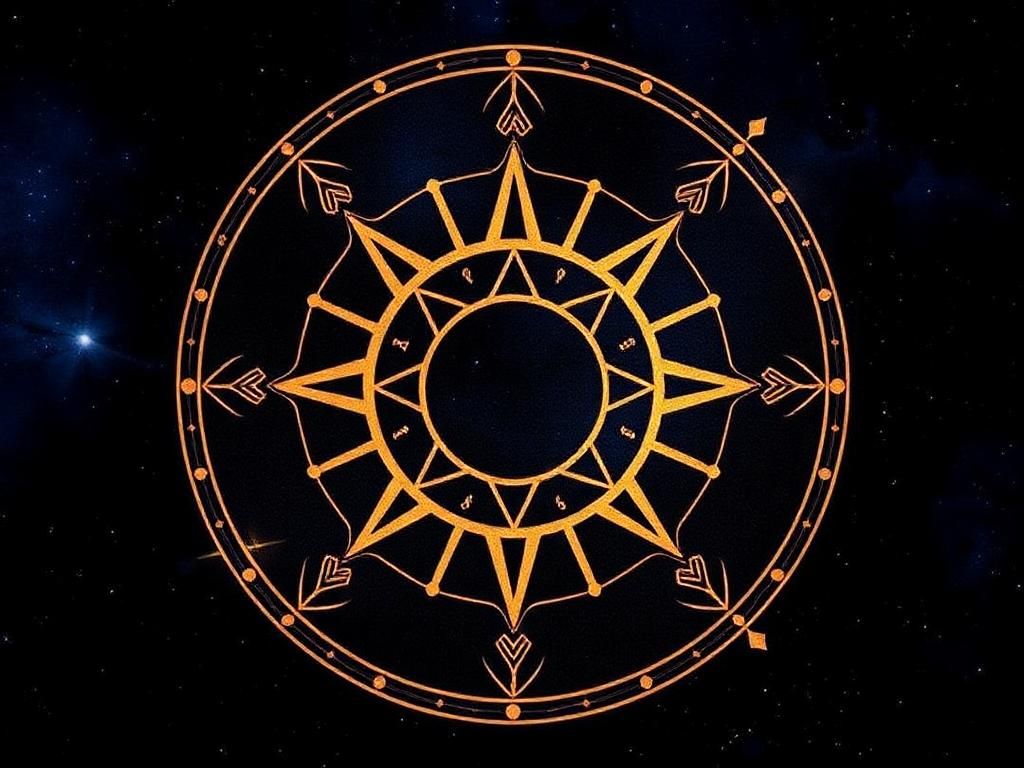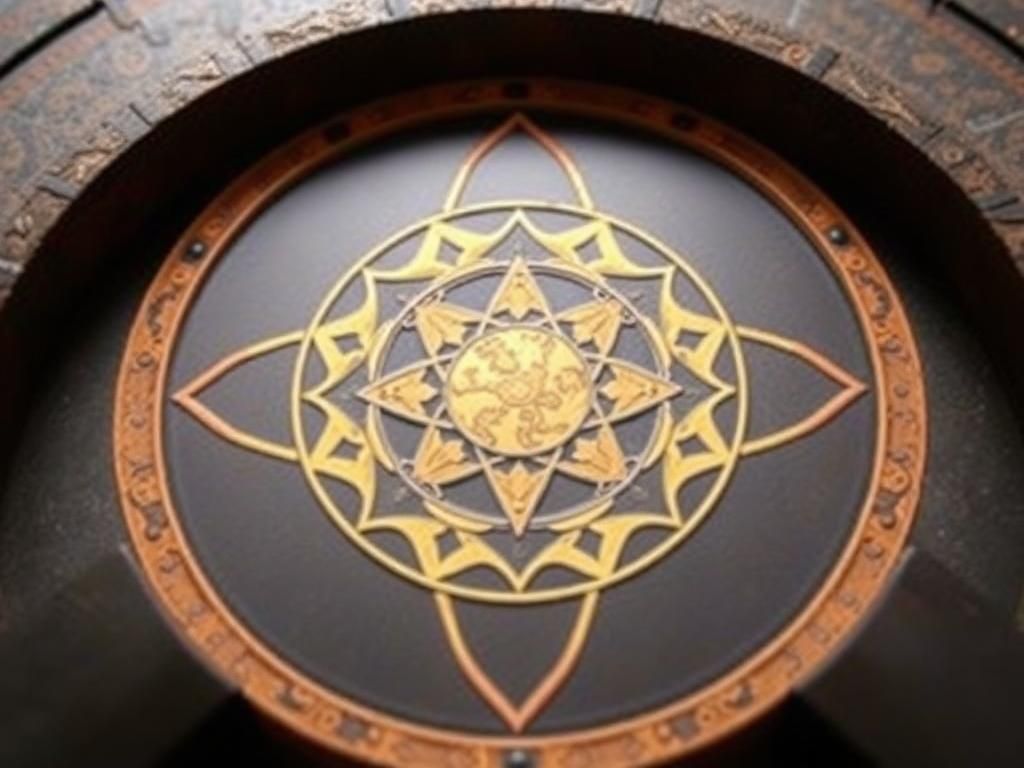The symbolism of the circle transcends mere geometry to encompass a rich tapestry of meanings that span across cultures, philosophies, and disciplines. A circle, defined as a planar figure with no edges, represents unity, completeness, and infinity. This article aims to explore the multifaceted meanings attached to the circle, examining its historical context, philosophical interpretations, scientific significance, cultural representations, psychological perspectives, artistic applications, and its presence in nature.
Historical Context of Circle Symbolism
Ancient Civilizations
Throughout history, ancient civilizations have ascribed profound meanings to the circle. For instance, in ancient Egypt, the circle was closely linked to the sun, symbolizing the cyclical nature of life and the eternal. The Egyptians used the solar disc as a powerful symbol of divinity and ruling power. The Greeks, on the other hand, revolutionized the concept of geometry, positioning the circle as the ideal form—perfect and unyielding. Its mathematical properties became integral to their study of ideal beauty.
Indigenous cultures across the globe have also embraced the circle as a representation of community and the earth. The circular formation of tribal gatherings signifies unity, while the earth itself is often viewed as a circle, a place where life sustains and evolves.
Mythology and Religion
The symbolism of the circle extends into the realms of mythology and religion. In Hinduism, circles feature prominently in cosmology—representing cycles of time and the universe’s eternal nature. The mandala, for instance, is a circular design symbolizing the cosmos. In Christian iconography, the halo around a figure’s head represents divinity, often portrayed as a glowing circle conveying sanctity and spiritual enlightenment.
Philosophical Interpretations
Plato’s Theory of Forms
Philosophically, circles have been associated with ideal forms, especially in Plato’s Theory of Forms, where perfect forms, such as the circle, epitomize the essence of beauty and truth. Plato regarded the circle as the most perfect geometrical figure, symbolizing the ultimate perfection of the physical world.
Ralph Waldo Emerson’s Views
Ralph Waldo Emerson, a key figure in the transcendentalist movement, also echoed similar sentiments regarding the symbolism of the circle. Emerson proposed that circles symbolize nature’s interconnectedness and the spiritual journey, where one returns to the beginning, completing a personal cycle of understanding and growth.
Scientific and Mathematical Significance
Geometry and Mathematics
Mathematically, circles hold a unique place in Euclidean geometry, where they serve as a foundation for understanding space. The mathematical constant pi (π), representing the ratio of a circle’s circumference to its diameter, further manifests the circle’s intriguing characteristics. This constant reminds us of the circle’s unending nature—an ideal embodiment of infinity.
Symbolism in Physics
In the realm of physics, circular motion describes countless natural phenomena—from the orbits of planets to the movement of particles. The orbit serves as a powerful symbol of cosmic cycles, suggesting that all things exist in a state of continuous motion and development, returning to a point of origin.
Cultural Representations
Eastern Cultures

In Eastern cultures, the symbolism of the circle manifests in varied forms. The Yin and Yang symbol, essential in Taoist philosophy, illustrates the balance of duality, where opposites exist within a harmonious circle. Similarly, Zen Buddhism features the Enso circle—a stunning symbol of enlightenment, creativity, and the journey toward understanding the self.
Western Cultures
Conversely, in Western cultures, the idea of the Circle of Life reflects indigenous narratives, embodying the cycle of existence. The Wheel of Fortune is yet another cultural representation seen in literature and games, indicating the cyclical nature of fortune and fate.
Psychological Perspectives
Carl Jung and Archetypes
From a psychological standpoint, Carl Jung’s theories have intertwined with the symbolism of the circle. He viewed the circle as a mandala—a representation of the self. The mandala facilitates the journey toward individuation, highlighting the subconscious’ role in shaping our understanding of identity. In dreams, circular shapes can also symbolize wholeness, completion, or the idea of a protective barrier.
Symbolism in Personal Development
In personal development practices, circles are often associated with goal-setting and visualization. The circular format provides a sense of completeness and focus, encouraging individuals to visualize their aspirations within a unified space. Additionally, recognizing the importance of cycles—for instance, in emotional well-being—can promote healing and personal growth.
Application in Art and Design
Visual Arts
Circles have been a vital element in the visual arts, used by renowned artists like Wassily Kandinsky, who embraced geometric forms to evoke harmony and emotion in his paintings. Circles in Impressionism, too, often symbolize the beauty found in nature and light, creating a sense of depth and movement within compositions.
Graphic Design
In the world of graphic design, circular logos carry significant meaning, symbolizing unity and continuity. Many successful brands, like Apple, leverage circular designs effectively to communicate values of inclusivity and completeness.
The Circle in Nature
Natural Patterns
The symbolism of the circle can be observed in natural patterns as well. Expertly constructed through evolution, circular patterns in flowers, shells, and other organic forms reflect the inherent geometry found in nature (phyllotaxis). These natural circles remind us of the unending cycles of growth and decay occurring in ecosystems.
Ecological Representation
Circles also symbolize the interconnectedness within ecosystems, representing the web of life where energy flow and nutrient cycles define existence. As modern societies increasingly focus on sustainability, the concept of circular economies—a system aimed at minimizing waste through ongoing resource utilization—fits perfectly with the circle’s symbolism in ecology.

Conclusion
Reflecting on the diverse meanings associated with the symbolism of the circle reveals its vital role across cultures, philosophies, and scientific paradigms. Contemporary societies possess an incredible opportunity to learn from the timeless nature of the circle, embracing its message of unity, continuity, and completeness.
By exploring how circles manifest in our lives and world—from the rhythms of nature to the intricacies of human experience—we enrich our understanding of our place in the universe and can draw inspiration for our personal journeys.
Further Reading and Resources
Books and Articles
For those interested in exploring deeper into the symbolism of the circle, consider these recommended readings:
- “Circles: Six Decades of Tradition” by Susan M. Wager
- The Geometry of Love: Shape, Symbolism, and Meaning in the Ancient World by Sarah E. Scott
Online Resources
Engage with documentaries and films on the symbolism of circles in culture and science:
- TED Talks featuring discussions on symbolism.
- YouTube insights into geometric and philosophical symbolism.
| Context | Symbolic Meaning | Cultural Example |
|---|---|---|
| Ancient Civilizations | Unity, eternal life | Egyptians & Greeks |
| Religion | Divinity, cycles of life | Hindu mandalas & Christian halos |
| Philosophy | Ideal forms, interconnectedness | Plato & Emerson |
| Science | Infinity, motion | Pi and planetary orbits |
| Art | Harmony, beauty | Kandinsky & Impressionist art |
| Nature | Cycling systems, growth | Phyllotaxis & ecological circles |
FAQ
1. What does the circle symbolize in nature?
The circle symbolizes cycles, such as life cycles and seasonal changes in nature, reflecting interconnectedness.
2. How is the circle used in psychological practices?
Circles are utilized in psychological practices as mandalas, aiding in self-discovery and healing journeys.
3. Can circles have cultural meanings?
Yes, circles have diverse meanings across cultures, representing unity, cycles, and continuity in different contexts.
4. Why is the number pi (π) important in relation to circles?
Pi is the mathematical constant used to calculate the circumference of a circle, highlighting its unique properties.
5. What role do circles play in art?
In art, circles evoke emotions, symbolize harmony, and represent beauty across various styles and mediums.
6. How do circles relate to personal development?
Circles represent completeness and are often used in goal-setting and visualization practices for personal growth.
7. What are some common symbols that involve circles?
Common symbols include the Yin and Yang, the Enso circle, and the Circle of Life in countless cultural narratives.
8. How can understanding the circle enhance spirituality?
Understanding circles can enhance spirituality by fostering a sense of unity, wholeness, and connection to greater cosmic rhythms.
9. Are there any famous quotes about circles?
Yes, several philosophers and artists have reflected on circles, emphasizing their beauty, perfection, and symbolism in their works.
10. How does the circle symbolize balance?
The circle represents balance by demonstrating that all elements within it are interconnected and work in unison to create harmony.
